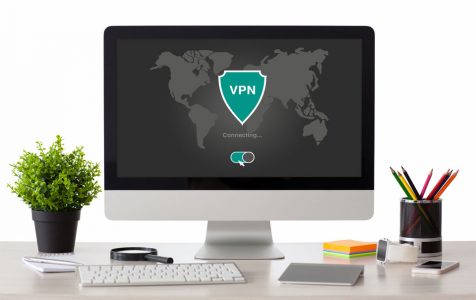Mac computers are widely lauded for being less targeted by malware creators and viruses, as they are thought to be generally better protected against such attacks. The need for VPNs, however, is an entirely different matter; VPN services are becoming increasingly important for Mac users who put a premium on their online privacy and freedom.
This article will serve as your guide on how to install VPN on Mac, the best VPN services available for Mac users today, and why it’s best to steer clear of free VPNs for now.
What’s a VPN Anyway?
A virtual private network (VPN) acts as your own internet connection, where all the data traveling between the computer and the internet goes through it. In turn, the VPN encrypts the data so it cannot be stolen or intercepted by third parties, such as government agencies and hackers.
Using a VPN allows you to protect your privacy as you browse the web anonymously. It also lets you hide your location and access content that may be blocked or unavailable in your region.
Online privacy is a big concern today, especially in light of the sophisticated ways that you and your activities can be tracked online. A VPN is one way to prevent getting spied on and putting your online browsing data in the hands of unauthorized individuals.
Why Mac Users Should Use VPNs
Macs may be less prone to malware than Windows computers, but they are just as susceptible to online threats of geo-locked content, spying, and other attacks. Here are compelling reasons for Mac users to get a VPN service today:
- Browsing from country of choice – Using a VPN will effectively tell the internet that you’re browsing from a specific country. This comes in handy for getting your hands on UK-exclusive Netflix content, for instance.
- Online privacy – With everything that you do on the internet being monitored – from the sites you visits to the emails you send – using a VPN proves to be crucial in preventing deliberate spying and keeping your online browsing confidential.
- Cybersecurity – Online browsing is marked by the use of multiple passwords. With the difficult of keeping track of all your passwords, you usually end up using the same password across various sites. This carries a significant risk especially when you’re logging into a banking site on unsecured public WiFi.
How to Choose the Best VPNs for Mac
Now it boils down to this question: what are the best VPNs for Mac today? The answer depends on different criteria, include the following:
- A macOS or OSX app available for the VPN provider
- A huge global server network that unblocks geo-locked content, e.g., Netflix, Amazon Prime, Hulu
- Compatibility with all common Mac operating systems, such as Mojave, High Sierra, and El Capitan
- Fast connection with unlimited bandwidth and no data cap
- Strong encryption
- A no-logs policy
Our top recommendation for Mac users is Outbyte VPN, which boasts of an extensive global network of servers for optimum geographic coverage, secure internet experience across devices, flexible subscription plans, and a no-risk, no-commitment 30-day trial.
VPN services aren’t perfect, but you can be better assured that you’re getting the best services on your Mac by trying a top paid VPN. Free VPNs have recently come under fire for different setbacks, such as the possibility of slowing down your internet and bombarding you with ads. It’s best to go for quality and search for a quality paid service for your VPN needs.
How to Install VPN on Mac
A reliable VPN provider like Outbyte VPN makes its service available through a secure app. Once you’ve subscribed to a plan, you will be given access to the app created for Mac. While the steps may vary from one client to another, here are the general steps to follow:
- Register an account with your chosen VPN provider.
- Choose your plan. If you just want to try out the service first, select the monthly plan.
- Once your account is verified, download the VPN on Mac.
- Install the app, which typically involves double-clicking on the downloaded app file and following the instructions.
- After installing, run the app. Once prompted, sign in using the account details that you registered with the VPN provider.
- When asked, allow admin privileges. VPN apps require this since they would need to tweak your Mac’s network settings.
- In the app’s main page, select the VPN server you want to connect to. Click CONNECT, GO, or a similar command.
macOS comes with a built-in VPN client supporting PPTP, L2TP/IPsec, and IKEv2 VPN protocols. Here are steps to manually set up a IKEv2 VPN configuration:
- Go to System Preferences > Network. Click the + button.
- The interface configuration dialog will emerge. On Interface, choose VPN. On VPN Type, choose IKEv2. On Service Name, enter your desired name for the VPN, such as VPN-IKEv2-Home.
- On the next window, fill in the server details with the settings that your VPN provider gave. You will need the Server Address and Remote ID.
- Click on Authentication Settings. Input the necessary data provided by your network administrator.
- Click OK and click Connect.
Final Notes
While Macs are generally deemed more immune to malware threats, they aren’t spared from online spying and the usual limitations that come with internet browsing. Choosing from the best VPNs for Mac can help you protect your online activities from snooping, have a secure online experience, and even access geo-blocked content such as on Netflix.
What has been your experience using a VPN for your Mac? Let us know in the comments!
